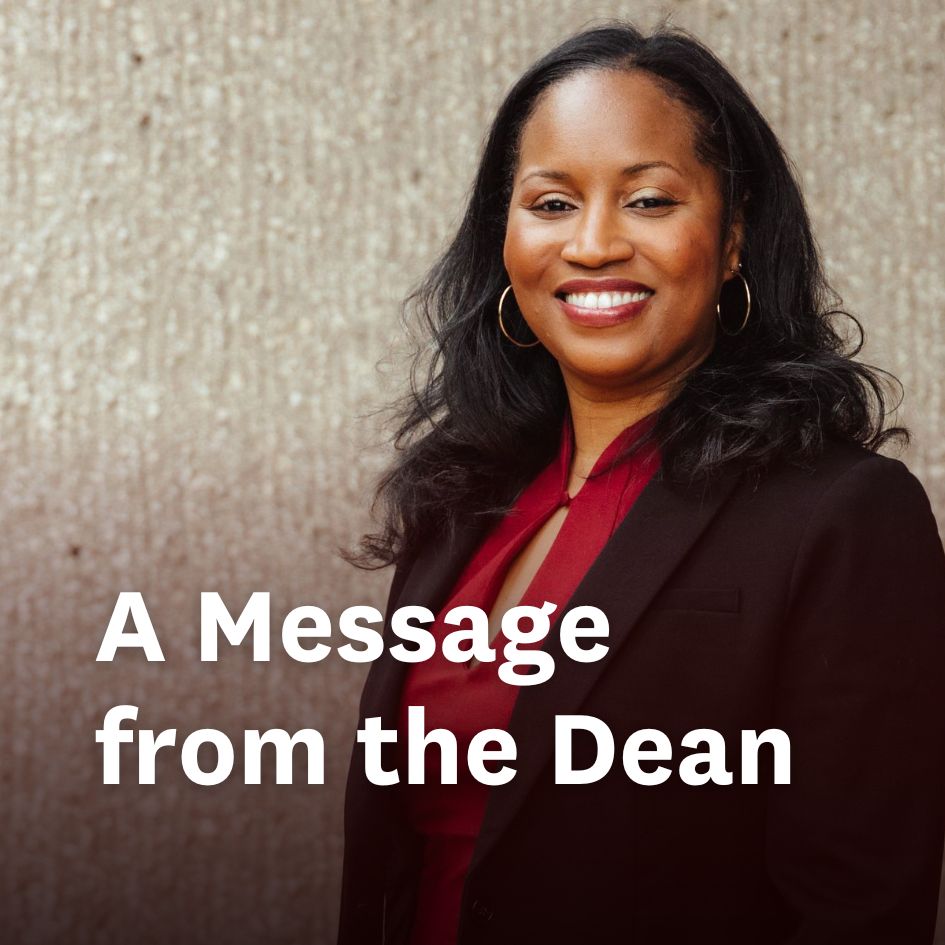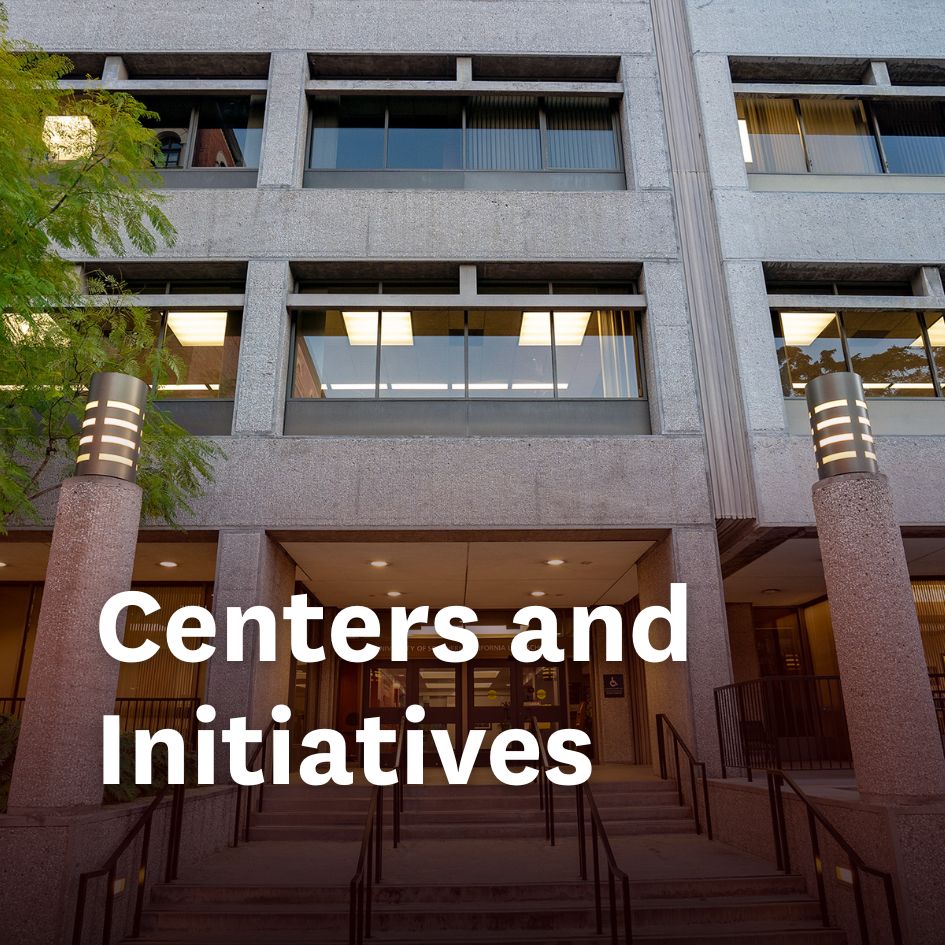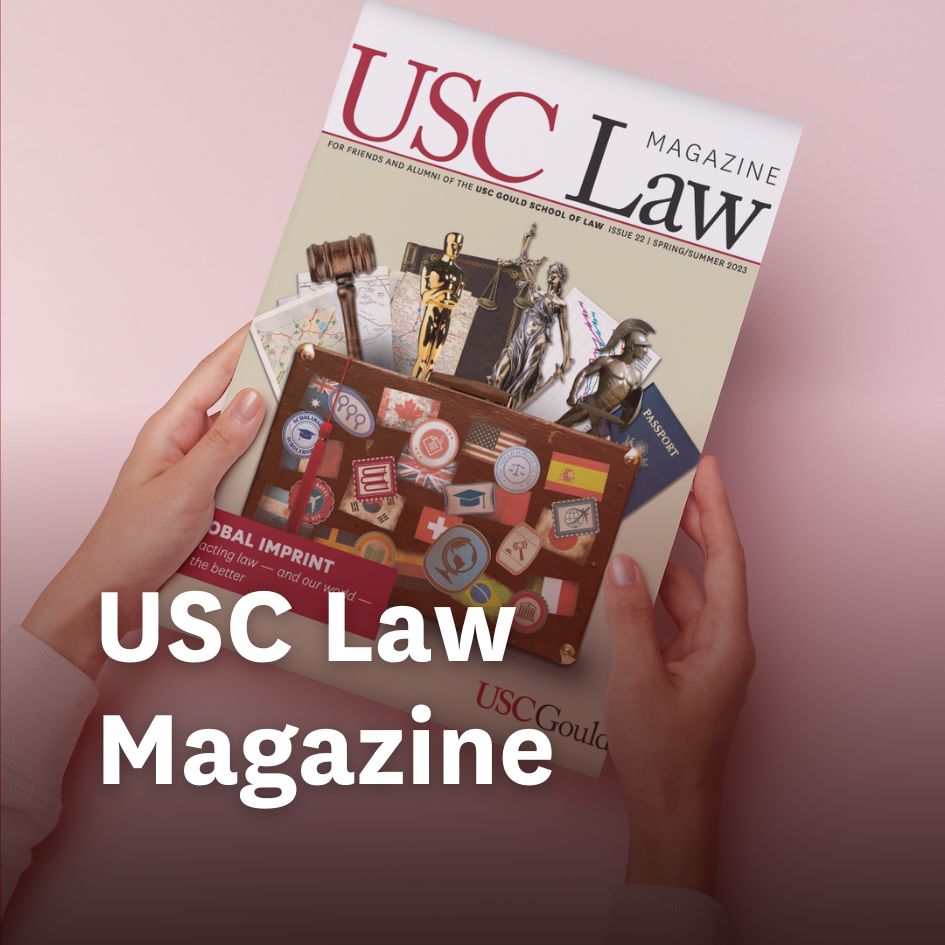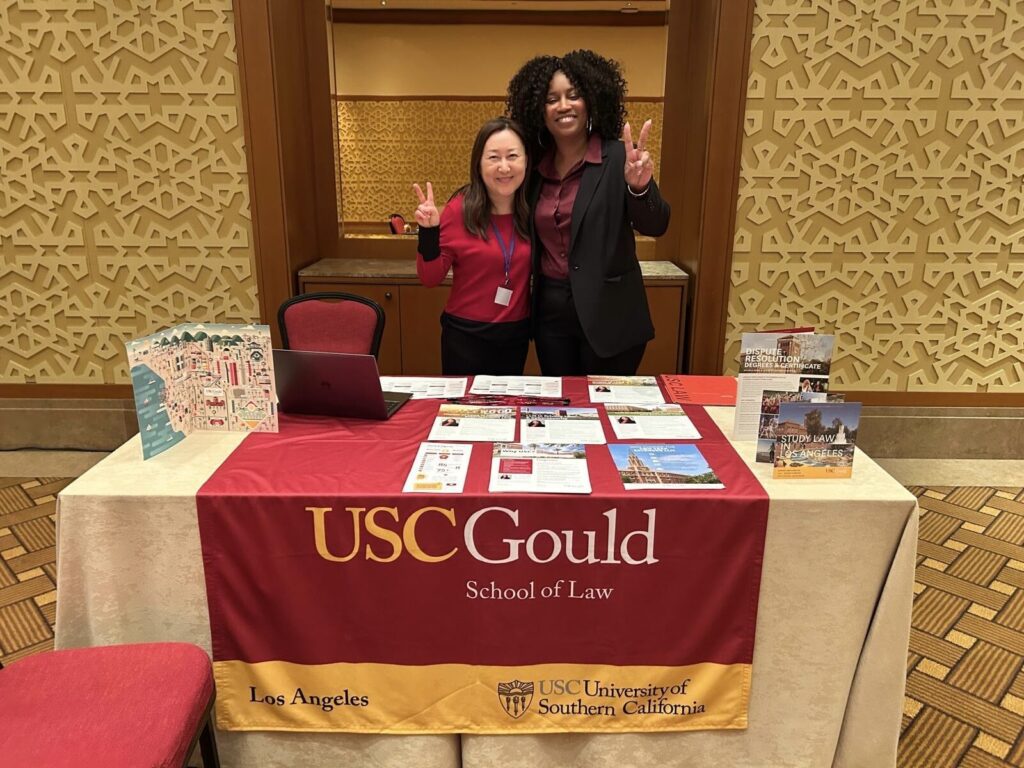Four attorneys discuss process from start to finish
-By Lori Craig
When Facebook filed its paperwork for an initial public offering Feb. 1, the company provided some interesting facts — such as the number of active users and Mark Zuckerberg’s salary — but other questions — including how many shares will be offered and at what price — remain unanswered.
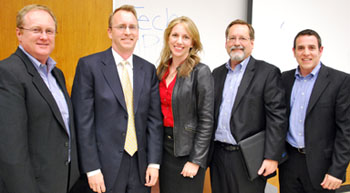 |
| Panelists Blake Welcher, Rob Carlson, Lisa Stimmel, Peter Astiz and USC Law Lecturer Donald Scotten |
How does a major technology company like Facebook first offer stock to the public, and what is a lawyer’s role in the process?
Four attorneys who have taken part in some of the most notable technology IPOs to date addressed that question and more at the first event to be sponsored by the USC Business Law Society (BLS), “Tech IPOs, from Start to Finish.” The panel discussion was the BLS’s inaugural event and well-attended by a mix of USC Law J.D. and LL.M. students and undergraduate and M.B.A. students from the USC Marshall School of Business, who filled the 130-seat room. The event was moderated by USC Law Lecturer Donald Scotten, who serves as advisor for the student group.
Panelist Rob Carlson, a corporate finance partner at Paul Hastings, said that, while Facebook plans to become a public company as soon as May, most companies can expect the process to take longer, and in fact the timing can vary quite a bit. To prepare, a company should practice going public for about a year.
“A lot of companies don’t realize that you don’t just file [to become public] and you’re public and you’re done. The process of going public is a long process and you need to have good advisors,” Carlson said. “You want to have a board of directors that’s solid and understands your business. You want to have good, solid management that will know how to sell your company not just internally but to investors, because investors are the ones that are going to make the decision of whether they want to buy your stock or not.”
Carlson presented a timeline for the IPO process and discussed some of the players.
The first phase, which Facebook completed in two weeks but more often takes a couple months to as long as a year, involves hiring the IPO team and drafting the filings for the Securities and Exchange Commission. A company looking to go public in the U.S. needs lawyers to represent them in the IPO process, accountants to audit three years of financial statements, and underwriters who will offer securities to the public and hire their own lawyers. Company management and the investment bankers are driving the process.
“Legal counsel and underwriters draft the S-1, that’s the main document, the registration statements that gets filed with the SEC,” Carlson said. “That becomes the basis for the prospectus that you use to market the company. You start the diligence process: the legal diligence … the financial diligence, the operational diligence. The lawyers, the accountants, the underwriters are all involved in this process.”
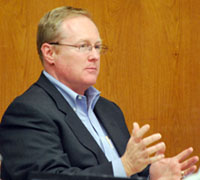 |
| DTS General Counsel Blake Welcher |
Junior associates review everything about the company: Are its articles and bylaws correct? Does it have a board of directors? What are its foreign contracts? What litigation is ongoing? Are its employment agreements correct? Does the company actually own the technology involved?
“All I can tell you is that if something isn’t correct, it’s going to be found and it’s going to be ugly if you’re in the registration process or, worse, already public,” said Blake Welcher, general counsel for DTS Digital Entertainment, which went public in 2003.
At the same time, the accountants are conducting due diligence on the business side to make sure that its financial projections are correct.
“What’s interesting about due diligence is you can’t just say, ‘Do we have financials?’ you have to say, ‘Are the financials right?’” said USC Law Prof. Jack Lerner.
This is a “consuming” and — given the legal and accounting fees — expensive time for company management, Welcher said.
“At best, it’s two times your normal job … and at a time when it’s most critical that you run your business,” he said. “That is a time you don’t want to stumble.”
Once the company files the registration statement, it also files a listing application with the stock exchange where it will list its shares.
“Once you file that S-1, there are things coming at you at all times, and there’s not time to put a lot of thought process into some of these other things that you will live with as a public company,” said Lisa Stimmel, a partner at Wilson Sonsini involved with the LinkedIn IPO and a follow-on offering. Ideally, a company’s lawyers are prepared and have been “living and dying with this company for the last few years.”
Peter Astiz, a partner with DLA Piper who focuses on general counsel services for high technology and was involved in the Groupon IPO, said that one of the key things about being a technology lawyer is being intimately involved in the company.
“Many times, we were there when they started the company,” Astiz said. “We’re a business provider through that whole process. And as we’re looking at the uncertainties and the timing of wanting to do a transaction, we’re in the boardroom, we’re talking about it, we’re using experiences that we’ve had to help educate everybody and be an objective participant in that process.”
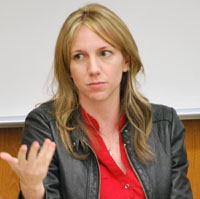 |
| Wilson Sonsini Partner Lisa Stimmel |
The SEC has 30 days to review the S-1 before returning with comments that are usually legal or accounting questions. The company has a period of about 6 to 10 weeks to address those comments and file amendments to its S-1.
Next, once the lawyers are confident there won’t be any material changes to the registration statement, the company prepares its preliminary prospectus and conducts a roadshow, giving presentations to prospective investors to try to sell the stock. The roadshow can be a week or two, or longer, and can take place wherever investors are located, Carlson said. Lawyers generally aren’t involved in the roadshow because investors want to see the CEO and CFO, but with technology companies, lawyers can get a number of questions, Welcher said.
Finally, with enough investor interest the company prices the IPO and in a few more weeks the process closes and the company is public.
“It’s not the end of the road, it’s actually the beginning of a whole new life for a company,” Carlson said.
But the stocks don’t necessarily go to the public, despite what the name of the process suggests.
“As a practical matter, what really happens is the company sells securities to the underwriters and then the underwriters sell to their accounts,” Stimmel said. With the underwriters’ discount, which is listed on the prospectus cover page, the company receives about 7 percent less than the price to the public.”
Also, Astiz estimated that about half of the 200 companies that are in registration today will not actually close an IPO.
“And so, a lot of things that we’re advising in this process are the cautionary aspects of making sure people are realistic about what’s going to happen,” Astiz said. “A lot of our role as counselors is really understanding the dynamic of how [an IPO] fits in the lifestyle of the company.”
(Click here to read more about the new Business Law Society.)



